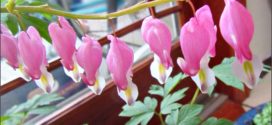We had a lot of oranges and lemons in our Sunnyvale garden this year so I decided to make marmalade, for the first time. We have a Washington-Navel Orange tree and a Improved Meyer Lemon tree next to each other in a 18-inch wide trench. The trees are twenty years old and pruned to 8 feet tall by 6 feet …
Read More »admin
Quick-Pickled Radishes
This recipe is a good use for radishes: either home-grown or store-bought. See Radish – Early Scarlet Globe for growing radishes at home. The pickling liquid has infinite variety. INGREDIENTS 1 bunch of radishes (18-20 average size radishes)1/2 cup vinegar1 cup water1 tablespoon granulated sugar1 1/2 teaspoons saltSpices (whatever you want and in any quantity)chopped gingerchopped garlicmustard seedsfennel seedsred chile …
Read More »Radish – Early Scarlet Globe
Early Scarlet Globe Radish is a very early radish variety with bright red skin and white flesh. So crispy, crunchy, and delicious, this variety is a long-time favorite of gardeners everywhere. They go great on fresh salads, or simply enjoyed raw. In our Sunnyvale garden, we plant radishes from November through February. Flavor: Juicy, crisp, and mild.Preparation Ideas: Adds crispiness …
Read More »Chicken Marsala
Potato Soup
I’m scratching my head trying to relate this potato soup recipe to our Sunnyvale garden. Maybe carrots. Yeah, carrots. It’s raining and cold and potato soup is comfort food.
Read More »Bleeding Heart plant
The bleeding heart plant (Lamprocapnos spectabilis) has heart-shaped flowers that hang in rows on arching stems above soft, green foliage. This spring-blooming perennial has a short growing season. By midsummer, the whole plant dies back to the ground. Bleeding heart is hardy in U.S. Department of Agriculture (USDA) plant hardiness zones 3 through 9. Common Name: bleeding heart Type: Herbaceous …
Read More »Russian Ridge – Mindego Hill
The Russian Ridge Open Space Preserve is known for its showy display of wildflowers in spring. In summer, the hills turn to gold with the late evening sunlight. Autumn, when the fog recedes, is the ideal time to enjoy the ridge views of San Francisco Bay, the Santa Cruz Mountains, and the Pacific Ocean through the crisp, clean air. Winter …
Read More »Honey Whole Wheat Bread
Prep Time: 60 minutes Start to Finish: 4 hours
Read More »Japanese Dried Persimmons
There are two major types of persimmons commonly available in America: fuyu and hachiya. Fuyu persimmons are squat and round and can be eaten out of hand like an apple. They have a crisp, almost waxy texture, and a sweet flavor slightly reminiscent of gingerbread. For hoshigaki, however, you will need to use hachiya persimmons. These are longer and pointed. …
Read More »Chicken Mole Poblano
This recipe has no ingredients from our Sunnyvale garden. But it does have a very tasty Mole Poblano Spice Blend from Oaktown Spice Shop that our daughter Shauna gave us for Christmas. Yield: 4 servings Prep: 50 minutes Cook: 1 hour 10 minutes
Read More »








